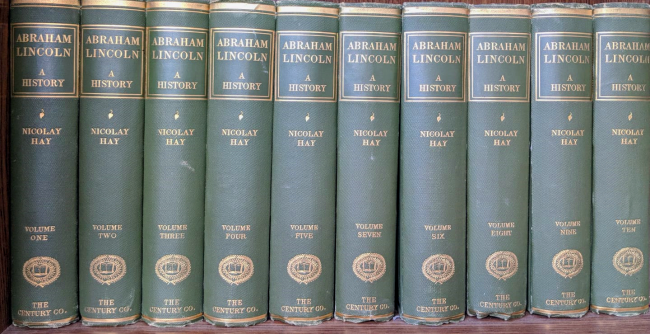
From Dr. Neil Gale's Digital Research Library of Illinois History®

 |
| The private street, Cable Court (5622S 1500W) is pictured here from Lake Park Avenue looking east. Circa 1950 |
 |
| In 1893 John Eddy Roll copyrighted this picture and turned it into a Carte de Visite (Cabinet Card) that was sold at the 1893 World's Columbian Exposition held in Chicago. |
 |
| A Cabinet Card that was sold at the 1893 Chicago World's Columbian Exposition. |
 |
| A cropped picture of Fido from a Cabinet Card. |

 |
| Painting of Abraham Lincoln giving the Gettysburg Address. |
 |
| CLICK FOR AN ENLARGED PHOTOGRAPH |
 |
| Gertrude 'Billie' Murphy, 22, is brought in for questioning in the murder case of Michael Stopec, who was shot and killed in an apartment hotel on July 22, 1927. |
 |
| The Birch Forest extended from about Birchwood Avenue south to Touhy Avenue, about 1/2 mile, and west to just west of where Sheridan Road is today, in the Rogers Park community of Chicago, ca.1900. |
 |
| The shaded area shows the burnt district at Rogers Park. |
